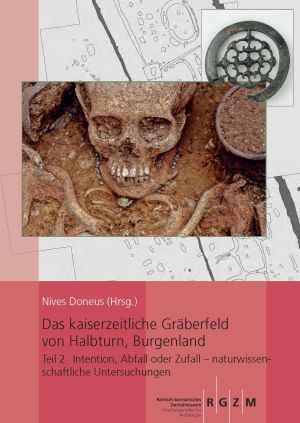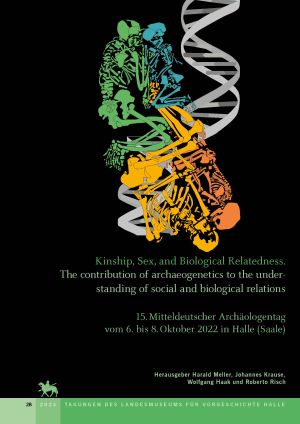Berner, Margit
Das kaiserzeitliche Gräberfeld von Halbturn, Burgenland: Teil 2: Intention, Abfall oder Zufall – naturwissenschaftliche Untersuchungen
At that time, the Roman cemetery of Halbturn I belonged to the western part of Pannonia; the ancient city of Carnuntum was about 30 km away. The cemetery was completely investigated by systematic excavations, which is unusual for this region.
The finds show a great variability in burial customs, which can be seen in the positioning of the burials and the buried, as well as in the different efforts invested in the construction of the tombs. These characteristics depend, on the one hand, on the chronological period in question (2nd-5th century) and, on the other, on the personal status of the deceased (according to age at death, sex and physical disabilities). Particularly unusual are the numerous infant and child graves.
In addition to the archaeological-typological evaluation, the monograph offers important insights into life at the time: for example, a child's amulet is the oldest evidence of Jewish faith in Austria to date. Nutrition, diseases and injuries - whether caused by agricultural activities or domestic violence - are also described in detail, as well as considerations on animal breeding and husbandry, cultivated and wild plants, stone monuments, etc. Last but not least, the site, which was previously recorded by aerial archaeology, geophysical prospection and systematic field surveys, offers numerous further insights into the associated agricultural holdings.
Kinship, Sex, and Biological Relatedness : The contribution of archaeogenetics to the understanding of social and biological relations
Relationships between people have always been the basis of social coexistence. Kinship – whether it is biological or social – has a very special significance. In archaeology, these immaterial connections have rarely been proven beyond doubt. In recent years, however, the field of archaeogenetics has developed methods and techniques that, given good DNA preservation, make it possible to determine the degree of genetic relatedness between two people who lived in the past.
The studies collected in this book, draw their knowledge on kinship from the fields of anthropology, archaeology, genetics, and the historical and social sciences. They demonstrate, on the basis of recent or previously known sites, which conclusions the new scientific insights allow on the one hand, but on the other hand also point out their limitations in the interpretation of (pre-)historic societies.








